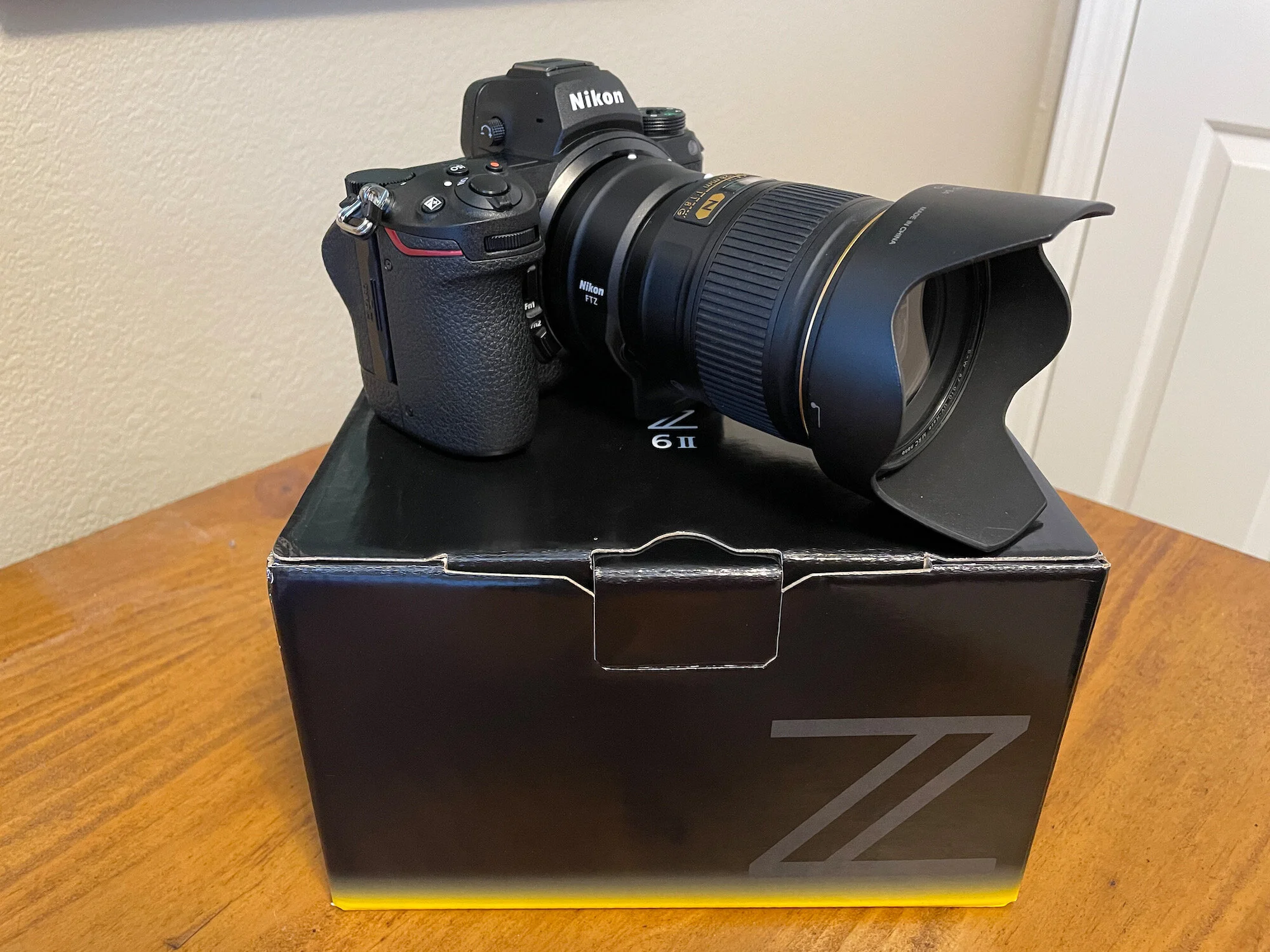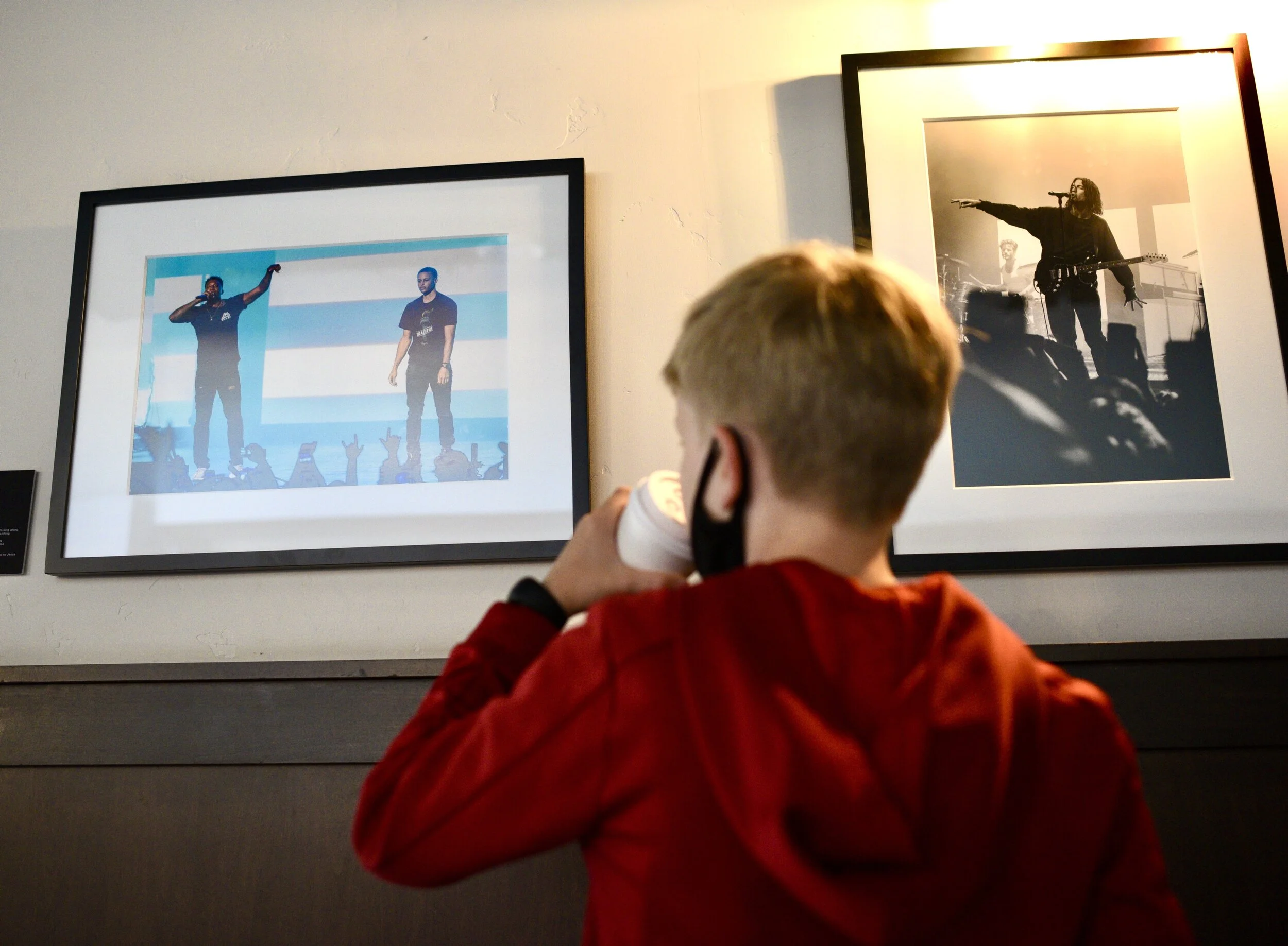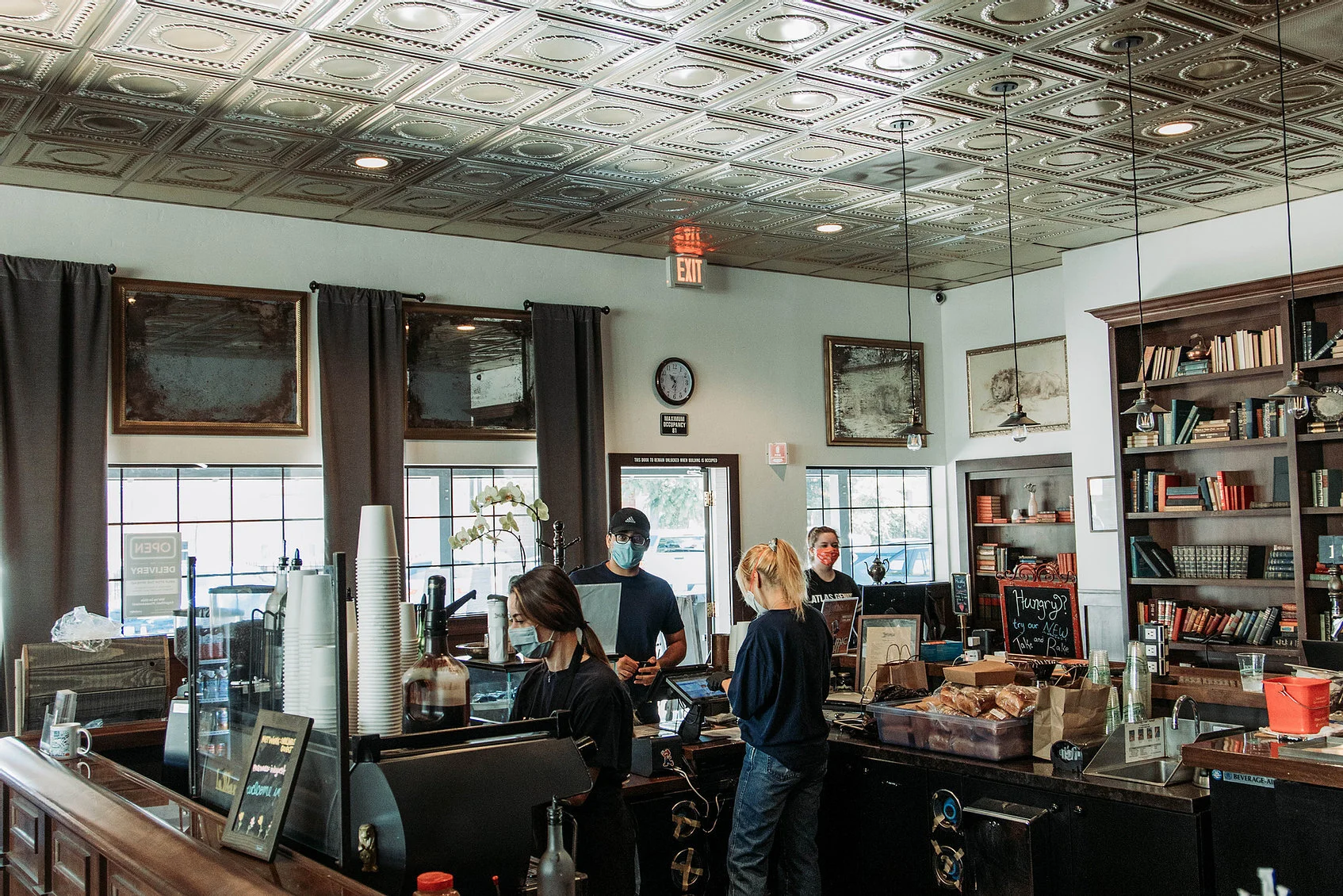In the last few years it’s been pretty hard to ignore the chorus of photographers who’ve pronounced that mirrorless is the future of photography and that DSLRs are dead. In the early days of the movement, it seemed like the Interwebs were full of concert photographers gleefully announcing that they had sold all their Canon or Nikon gear and dropped an enormous hunk of cash on all the latest and greatest Sony Alpha models and lenses.
I, like a lot of my fellow concert photographers, stood by, lovingly cradling my DSLRs and wondering: was this the inevitable future? Was mirrorless being overhyped? Was it worth the expense and learning curve of adopting a whole new system, just to shed little weight here or there? Were the other benefits of mirrorless enough to outweigh the drawbacks such as reduced battery life and the need for an electronic viewfinder?
Personally I’ve been pretty happy with my Nikon DSLRs. For the last 6+ years I’ve been shooting with a pair of Nikon D750’s with great success. To me, that camera has been a perfect fit for the demands of concert photography: great low-light performance, less weight (compared to the beefy D800/D850 line), and reasonable resolution (24.3MP) that isn’t a pain to work with when you’re trying to cull and edit your shots half-awake at 1am after a show. I haven’t had a good reason to replace my cameras, even as Nikon has made improvements to their lineup over the years.
But then, the pandemic hit. And suddenly I found myself without shows to shoot for almost a year and a half, and things I might normally spend money on weren’t possible to spend money on as we were stuck at home for long periods. And I was bored. Very bored. I started to think, maybe it’d be fun to buy a new camera and play around? Maybe I should dip my toes in the mirrorless pool and see what it’s really like?
When Nikon finally introduced their first mirrorless camera bodies in 2018, they didn’t exactly set the world on fire. The Z 6 and Z 7 seemed like they were rushed out the door to catch up with Sony and Canon’s efforts, lacking common pro features like dual card slots. But in late 2020, Nikon released a refresh of the Z 6 and Z 7, the Mk.ii models, which greatly improved their processing power and added some of the painfully missing features. Firmware updates added new autofocus modes and features to fill in the gaps. Suddenly, Nikon’s mirrorless offerings were starting to look a lot more compelling.
I knew a few photographers who had switched to Sony’s mirrorless system years ago, but I didn’t know too many that were shooting concerts with the Nikon Z system yet. But one notable exception was Todd Owyoung, a well-known tour photographer and industry leader, who has spoken in various forums about his adoption of the Nikon Z system. Now it’s important to acknowledge that Todd’s a Nikon Ambassador, which means he’s paid to be a Nikon cheerleader of sorts, so you might be inclined to take any endorsements of his with a grain of salt. But Todd’s also a working tour photographer with big name clients who couldn’t care less what type of camera he’s shooting with, as long as he’s getting the shots. And if Todd is convinced he can do his job well enough to go all-in with the Nikon Z system, that says something.
Z 6ii with FTZ adapter and Nikkor 24-70mm f/2.8G.
So I took the plunge. Heading into the summer, I decided to purchase a Nikon Z 6ii to play around with. Concerts were still a ways off, but I had plenty of other things to shoot that were less intense like kids sports, portraits, and travel, and that would give me time to adjust to the differences before it came time for critical work.
And what’s the verdict now that I’ve been a Z 6ii owner for a little while and have shot a handful of shows? I’m hooked.
I’ve replaced both of my D750’s and one lens (more on that in a minute) and I’m already thinking about when I will transition the rest of my critical glass to their Z-mount flavors. But the transition hasn’t been completely smooth, and I’m still tweaking my approach with the new cameras. In this post, I’ll share a few of my early impressions, pain points, and favorite features, with a specific eye toward concert photography.
What I Love
Electronic Viewfinder
The Black Crowes. Z 6ii and Nikkor 24-70mm f/2.8G with FTZ adapter. 1/800 sec at f/2.8 and ISO 800.
Let’s start with one of the biggest challenges concert photographers face: nailing exposure. Concert photography means often shooting in erratic lighting conditions, which can make it tricky to keep an eye on your exposure, especially if you’re shooting in full manual mode as I do. There’s nothing worse than setting up for a dim lighting cue only to have the lights unexpectedly blast the stage and cause you to badly overexpose your images because you forgot to pay attention to your camera’s light meter. Or worse, you miss a big jump shot because you were busy reviewing your recent exposures (aka “chimping”) to double-check your exposure levels.
The best part of mirrorless (the electronic viewfinder) is also one of the largest sources of complaints (more on that later.) But for me, the pros outweigh the cons. Being able to see a live view of the exposure in the viewfinder is game changing. Even better is that I can get a live histogram in the bottom right corner of the viewfinder as well! This has made chimping completely unnecessary, and has paid dividends in fine tuning exposure during my first few shows, saving me considerable time in post. It’s much easier to notice that your exposure is off by looking at a histogram or the scene itself rather than relying on your camera’s simplistic meter at the bottom of the viewfinder.
And for those times where you do want to review your images, or dive into some menus? You can do all of this in the viewfinder now! This is a great time saver since the camera never needs to leave your eye, but it also makes it easier to use the camera in bright sunlight since you don’t have to worry about shading the back screen to see stuff.
USB-C
Finally, I can charge my batteries without removing them from the camera! Very convenient when traveling.
I can also plug my camera into the computer for high speed data transfers, but I haven’t found that to be any faster than just plugging my CFExpress card into a dedicated reader.
Programmable Lens Control Rings
One nice feature of the new line of Z-mount lenses is the addition of a programmable control ring near the mount point. This ring can be used to control a few different camera settings like aperture or exposure compensation. I’ve got one Z-mount lens so far, and I’ve set mine up to control ISO.
While I’ve used auto-ISO in the past, I very much prefer to have complete control over all aspects of exposure, because it’s hard to trust the camera to make good decisions when shooting concerts (lots of deep black, lots of bright white tends to confuse the metering system!) But adjusting ISO in manual mode has always required pushing a button before turning a dial, which is awkward and sometimes hard to locate in the heat of the moment. With the control ring, I finally have a way to make ISO adjustments on the fly by simply turning a dial, same as with aperture or shutter speed.
What Required Adjustment
Viewfinder Lag
Because you’re looking at a tiny LCD screen in the viewfinder instead of looking directly down the lens, there’s a little bit of lag in what you’re seeing vs. what’s happening in front of you. It’s more noticeable when you pan aggressively, or when you have the camera set up in extended continuous high speed mode (14 fps) and the viewfinder blacks out a bit. This is the thing most people complain about with electronic viewfinders, and it’s an area that camera makers are aggressively trying to improve with each new model (faster sensor readouts! higher refresh rates! blackout-free shooting!) It takes a little getting used to when you’ve been shooting DSLRs exclusively.
So far I haven’t noticed the lag causing me to miss moments like I feared it would. Maybe I’ve just gotten used to anticipating the moments so I begin my bursts a little early, which compensates for the lag? But I always have this awareness in the back of my mind when I’m looking through the viewfinder now.
Fall Out Boy. Z 6ii and Nikkor 70-200mm f/2.8G with FTZ adapter. 1/500 sec at f/3.5 and ISO 1600.
Standby Timer
Something I learned right away is that mirrorless cameras consume a lot of power, so they have new ways to put things to sleep when you’re not actively shooting. Besides turning off the viewfinder when you’re not looking through it (not an issue), the Nikon Z6 ii automatically puts itself to sleep after a period of time (by default only 30 seconds) and must be woken up by pushing a button such as the shutter release or AF-ON button. Worse, unlike a DSLR it takes a second or two to fully wake up. This drove me crazy when I first got the camera, as I was used to grabbing the DSLR dangling at my side and capturing spontaneous moments in a split second. For concert photography, where I’m switching between bodies constantly, that kind of waking lag would be a deal breaker.
Thankfully, the standby timer is configurable under custom setting c3: Power off delay > Standby timer. I switched mine to 10 minutes. Will this have a detrimental effect on my battery life? Without a doubt. But in the photo pit speed is critical, so the tradeoff is a good one. Which brings me to the things I don’t love…
What I Don’t Love
Battery Life
As expected, batteries don’t last nearly as long in this brave new world of electronic viewfinders. I put a vertical grip on one of my bodies to double my battery capacity, and I am learning to carry a spare battery in my pocket for longer sessions with the non-gripped body. Coming from a world where my DSLR could stay in standby mode for hours and still last for many, many shows without needing the batteries charged, this has taken some getting used to. We’ll see how much of a problem this really is next time I shoot a festival.
Card Door Opens Too Easily
Ok, this one isn’t an issue with mirrorless or the Z system, rather more of a complaint about the Z 6ii’s design. But I’ve found that the SD/CF card door keeps popping open as my camera gets jostled in the photo pit. It seems to happen at least once a show if I’m moving around a lot. I’m worried one of these days it’s going to get broken off! I never had this problem with my old D750’s.
On my D750 I used to hold down the pop-up flash with gaffers tape because it was too easy to trigger by accident in the pit, and now I’ve found a new use for my gaffers tape I guess. Hopefully Nikon will improve this design in future mirrorless bodies.
Lens Issues
I have a lot of F-mount glass, so I’m using the Nikon FTZ adapter on both bodies so I can continue using my older lenses. So far, my Nikon lenses have worked pretty much flawlessly. I haven’t noticed any problems with autofocus speed or accuracy, and the image quality seems unaffected.
But I did have one third party lens, a Tamron 15-30mm f/2.8 (1st Gen.) which exhibited some odd issues one time during a show. Generally it worked fine, but during one big moment in the show something went wrong and the camera seemed to lose the ability to autofocus despite having good areas of light and contrast to focus on. It hunted repeatedly and seemed to jump in and out of manual focus mode when it gave up. I fixed it by turning off the camera and removing and replacing the lens. I’m not sure what caused the issue, but it wasn’t something I’d ever seen happen with this lens on my D750.
The Interrupters. Z 6ii and Tamron 15-30mm f/2.8 with FTZ adapter. 1/2000 sec at f/4.5 and ISO 400.
I ended up selling that lens and replacing it with the Nikon Z 14-24mm f/2.8, my first (and so far only) Z-mount lens. I had long been thinking of replacing the Tamron as it weighs almost 2.5 lbs. and is rather bulky to carry around when traveling, so this issue was the thing that convinced me to invest in my first Z-mount lens.
The new lens is incredibly quiet and fast, and makes beautiful pictures. It’s also thinner than the lens it replaced, and weighs almost a pound less! I can’t wait to eventually move the rest of my core lenses into native Z glass. (Too bad they’re so pricey…)
Not Using the Built-In Flash as a Handhold
This is kind of a weird thing to lament, I know, but I had a habit of using the overhang from the built-in flash on my D750 as a finger-hold when I wanted to pick my camera up. Is that a smart thing to be doing? Almost certainly not, but it worked well for me and it became a habit! The Z bodies don’t have a built-in flash, and the viewfinder box doesn’t overhang the front of the mount, so I no longer can pick my camera up this way. Boo! Oh well, I’ll adjust and pick up my camera like a normal person.
What I’m Still Evaluating
Silent Mode
I set my cameras up to use a fully mechanical shutter, because I’ve heard that using an electronic shutter at high ISOs can lead to banding in the shadows. I haven’t tested to see if that’s true, but I’m perfectly happy using a mechanical shutter so far. I expect that the day will come where I’ll be shooting a quieter show or event where using a silent, fully electronic shutter will be necessary, so we’ll see how it performs then.
K.Flay. Z 6ii and Nikkor Z 14-24mm f/2.8 S. 1/250 sec at f/2.8 and ISO 3200.
Eye/Face Focus Mode
I tend to stick with single or group-point continuous autofocus and don’t let the camera make too many decisions about what to focus on or how to track it, so I haven’t tried using face/eye detection autofocus yet. But I can see where it might prove very helpful for some shows. I plan to try using it next time I have decently well-lit show where the subjects are reasonably easy to track, and will ramp up its use in more challenging environments until I find the breaking point.
On a side note, I’ve heard that Canons have the ability to program one of the selector buttons to instantly switch into eye/face tracking mode, and I wish I could do that with my Nikon. Hopefully that’s something they’ll add via firmware update eventually!
Conclusion
All in all I’m very pleased with my Nikon Z 6ii’s for concert photography. There’s a little bit of a learning curve and some new configuration settings that you’ll want to play around with before you enter the pit for the first time, but once you have the camera dialed in to your preferred method of shooting, it becomes a joy to work with. It’s difficult now to imagine going back to a DSLR! And I can only imagine that my fondness for the system will grow over time as I invest in more Z-mount lenses. I’m eager to see what improvements Nikon continues to make to their cameras, and what new and exciting lenses the new mount will enable them to produce.
Tré Cool of Green Day. Z 6ii and Nikkor 70-200mm f/2.8G with FTZ adapter. 1/1000 sec at f/3.5 and ISO 1600.




